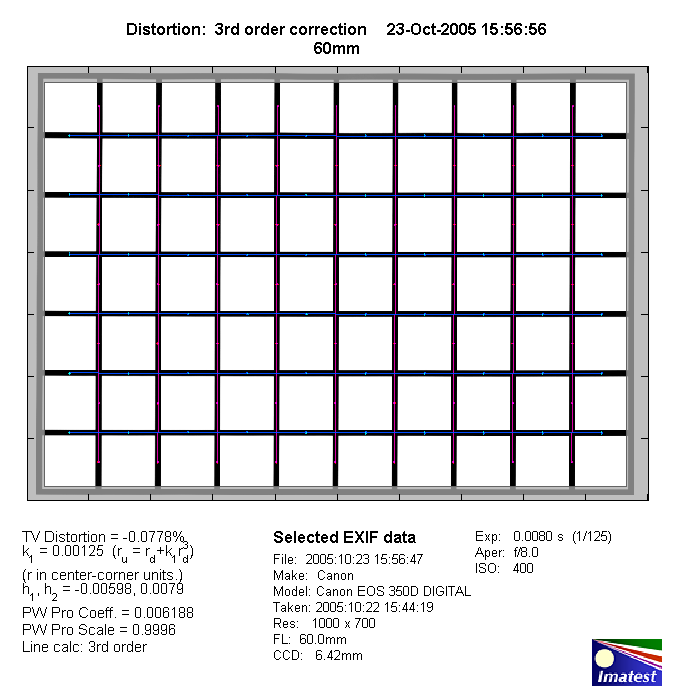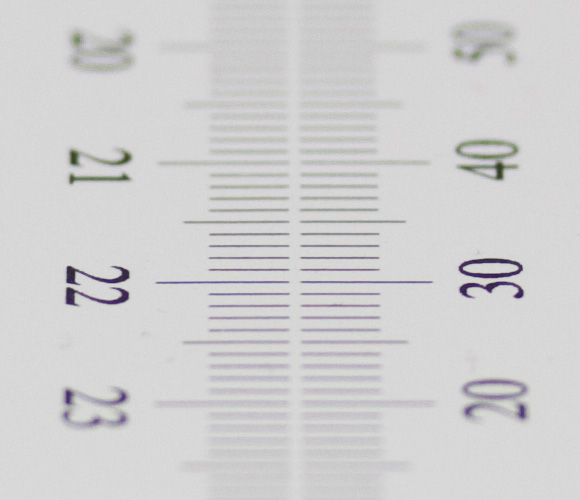|
Canon EF-S 60mm f/2.8 USM macro - Review / Test Report - Analysis |
|
Lens Reviews -
Canon EOS (APS-C)
|
|
Page 2 of 3

Distortion
Macro lenses are designed to produce minimal image distortion and the Canon is pretty much perfect
in this respect at less than 0.1%.

The chart above has a real-world size of about 120x80cm (taken from the initial review of this lens).
Vignetting
The vignetting characteristic of the Canon lens is somewhat mediocre. At max. aperture we measured
an edge shading of ~1.4EV which is too much for an APS-C format prime lens. This will be visible in
many scenes although you may debate whether it's generally annoying depending on your scene. The
issue is mostly resolved at f/4 and not field relevant beyond.

MTF (resolution)
Typical for most macro lenses the EF-S 60mm f/2.8 USM macro performed excellent in the MTF lab. The center resolution
is nothing short of superb and even the borders as well as the extreme corners are only slightly worse. Diffraction
effects have a higher impact from f/11 onwards. f/16 is still good but you shouldn't really go any further from there.
At f/22 there isn't really much quality left anymore.
The tested sample was a little better than the one tested on the old EOS 350D a couple of years ago.
Please note that the MTF results are not directly comparable across the different systems!
Below is a simplified summary of the formal findings. The chart shows line widths per picture height (LW/PH) which can be taken as a measure for sharpness.
If you want to know more about the MTF50 figures you may check out the corresponding Imatest Explanations
Chromatic Aberrations (CAs)
Similar to most other fix-focal lenses chromatic aberrations (color shadows at harsh contrast transitions) are
very low to low at all but very small aperture settings and usually nothing to worry about.

Bokeh
The bokeh (the quality of the out-of-focus blur) is a primary aspect for a macro lens. The Canon does a average job here
which is a little disappointing. The background blur is pretty smooth whereas the foreground can be a little rough.
Out-of-focus highlights show a "cat's eye" effect at f/2.8 due to the mentioned vignetting problem at this setting. At
the highlights have a more circular shape at f/4 but the highlights show some outlining here.

Bokeh Fringing / Longitudinal Chromatic Aberrations (LoCA)
Bokeh fringing at large aperture is a problem which is often not well corrected even by the very best
lenses. If you have a look at the provided sample crops below you should be able to spot a purple halo
in front of the focus zone and a green one beyond. The effect is clearly visible from f/2.8 till f/4, a
little less so at f/5.6.
|
Move the mouse cursor over the f-stop marks below to observe the respective LoCAs
|
| f/2.8 |
f/4 |
f/5.6 |
|

|
|